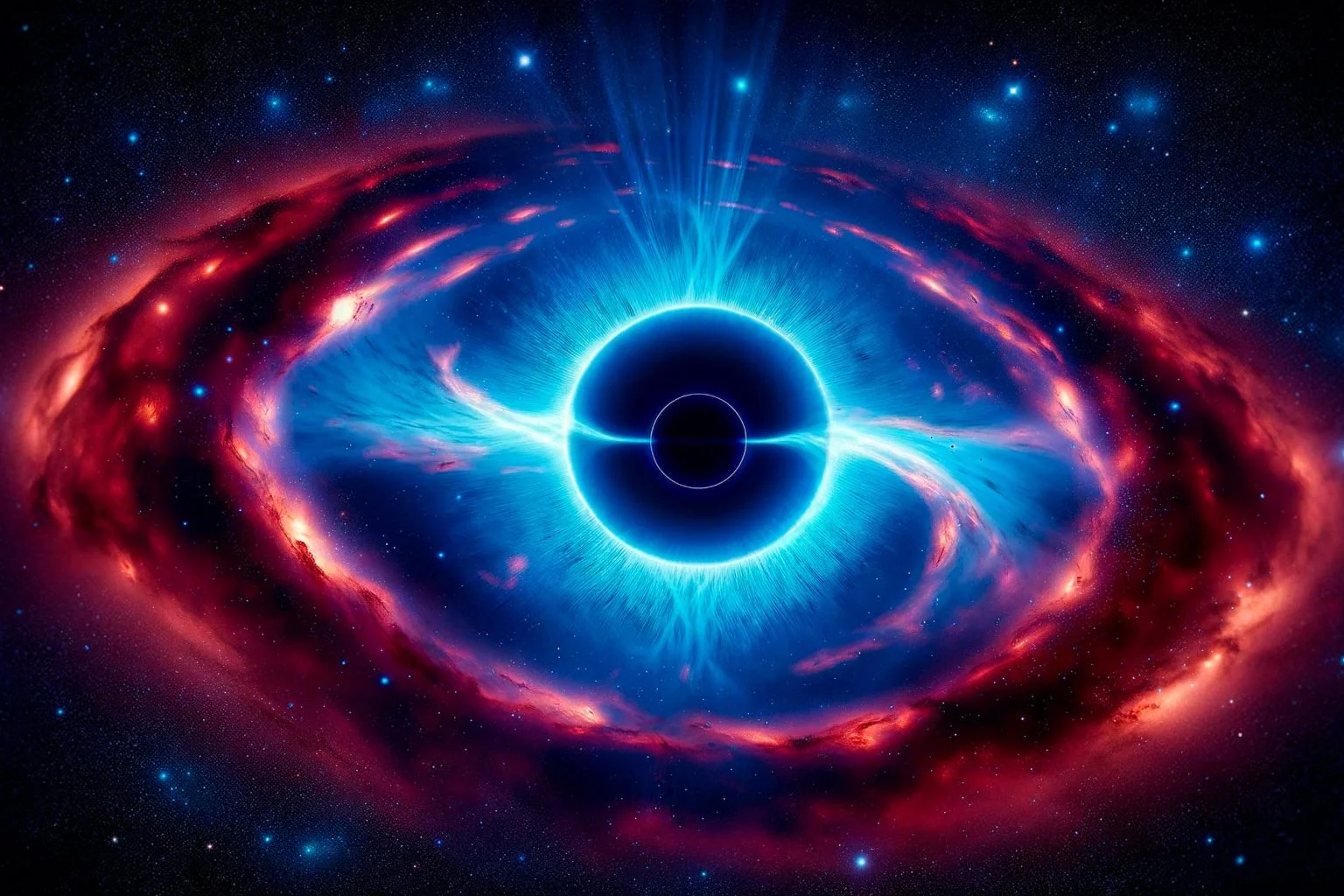The quasar H1821+643 rewrites black holes and other material interactions in galaxies. The quasar H1821+643 interacts with its entirety, and that is a so-called dominating object. But dominance between that quasar end especially the supermassive black hole and its environment is lower. So the black hole doesn't dominate its environment as much as it predicted.
This means that black holes' spin can cause an effect that black hole spins empty. The situation means that a black hole creates a small area around it that isolates it from the environment. In that model, there is sometimes a vacuum near a black hole that the black hole is not in contact with its material disk all the time.
In some other models, the fast spin of a black hole affects the material energy level that material near the event horizon turns so hot, that it can affect the black hole's energy interaction. So high-energy plasma could cut or affect the black hole's gravitational interaction.
All black holes have gravitational interaction. But the high-energy transition or material disk around the black hole also pushes material away from the black hole. Also, black holes relativistic energy ray transports energy out from black holes. A black hole's relativistic jet may involve a wormhole.
And if that relativistic jet hits to object that is dense enough, that thing can even turn another object into a black hole by pressing it through its magnetic field. Understanding black holes and their shape allows us to understand things like the Big Bang.
If dark matter is a so-called stable quasiparticle. That would revolutionize understanding of material and its form. So can those hypothetical stable quasiparticles exist near black holes?
The black holes can also interact with dark matter. In modern models, black holes pull dark matter inside it. And that thing means that they should give us data about dark matter. Part of dark matter may be so-called quasi- or pseudoparticles. But there could be some, yet unknown particles. So the black holes can give tips on what kind of thing is dark matter. If so-called stable quasiparticles are possible, that could change our way of thinking about the material.
What are black holes?
What are black holes? They are shadows. When a gravitational field pulls something into the black hole it will not pull particles. It sends counter radiation to the electromagnetic field. The name of that radiation is the gravitational radiation. The gravitational radiation travels through the impacting electromagnetic fields. And that takes their energy out of them. That forms a lower energy area at the side of the gravity center.
That means outcoming energy drives particles into the gravity center. The outcoming energy travels faster than the particle forming a quantum shadow at the side of the gravity center. That electromagnetic shadow pulls particles into the black hole. The thing that denies the gravitational effect is that somebody fills that shadow. If the system can fill that shadow it can break the gravity.
This thing causes an idea, that a material's energy level has some kind of influence on gravity interaction. That can mean that the gravity effect is lower when an object's energy level is higher. The thing in this case is the high energy level will resist the gravitational interaction on the side of the gravity center. The idea is that the gravity waves have a very short wavelength. And they will travel through photons or other objects and electromagnetic radiation. And that thing takes those photon's energy levels to a lower level. So gravitation affects into gravitational center's environment. Not to particle.
The idea is that opposite-traveling gravity waves take energy from incoming radiation. And that forms the gravity pool that pulls objects into the gravitational center. So the high-energy particle creates radiation or wave movement that makes it kick against the lower-energy particles in the gravitational pool.
The idea is the same as in a river. Gravitation is like a river that transports particles with it. Energy travels to the gravitational center. And that makes the gravity center colder than its environment. The particle's energy level must be high enough that it can push against those particles that travel to the black hole.
The thing that makes gravitation function is the shadow that forms at the gravity center's side. The outside energy will push the particle into the black hole. The thing that the particle must do is create so a high energy level that it can fill that shadow.
https://scitechdaily.com/defying-expectations-the-quasar-thats-rewriting-galactic-rules/
https://en.wikipedia.org/wiki/Quasiparticle






No comments:
Post a Comment
Note: Only a member of this blog may post a comment.